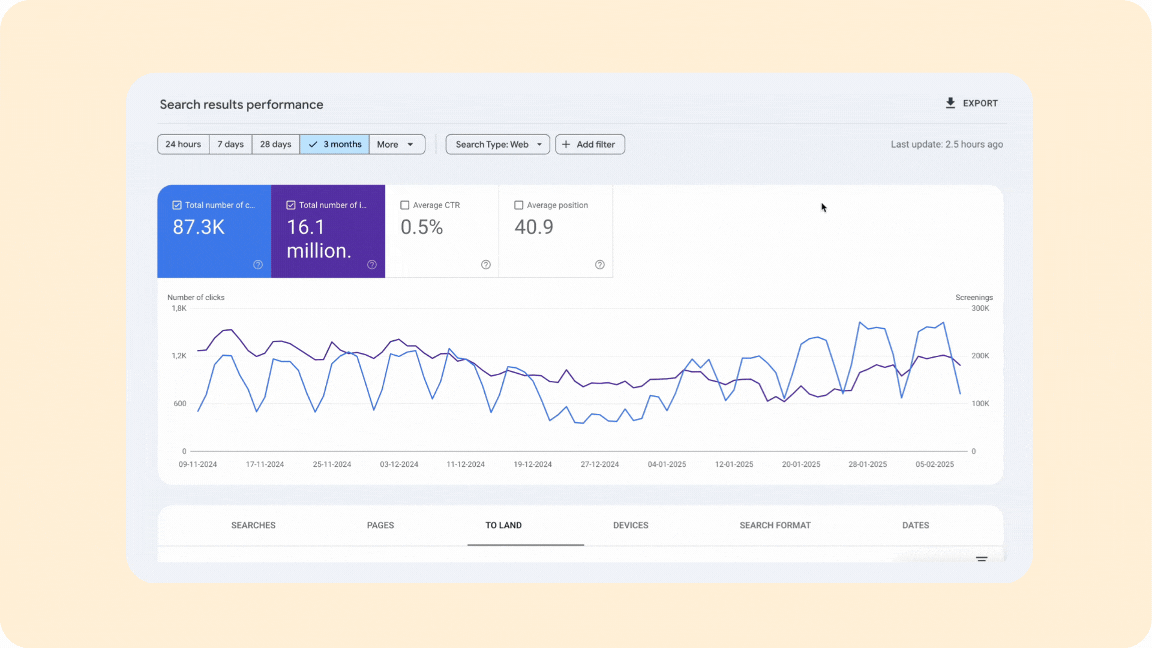The importance of ccTLDs versus subdirectories for global SEO

When developing an international SEO strategy, you are faced with a choice between ccTLDs (country code Top-Level Domains) and subdirectories. This choice plays a decisive role in how well your Web site is found internationally.
For example, a .fr domain is often better trusted by French users than a generic .com domain. Read about the pros and cons of both options and learn how to make the right choice for your international website.
What are ccTLDs and subdirectories?
A ccTLD is a country-specific domain extension, like .nl is for the Netherlands and .de is for Germany. This directly indicates that a website targets a specific region. Subdirectories are language-specific sections within one main domain, such as yourwebsite.com/en/ or yourwebsite.com/de/. Companies often hesitate about which option is best, as both methods have their own advantages and disadvantages.
Advantages and disadvantages of ccTLDs.
When choosing between ccTLDs and subdirectories, it is important to weigh the pros and cons carefully. Both structures directly affect how search engines index your website and how users perceive it. Below I discuss the main points that will help you make the right choice.
Using ccTLDs has several important advantages. For example, search engines immediately recognize the geographic focus of your website. Furthermore, users tend to trust local domains more, which increases the click-through rate (CTR). CcTLDs are ideal for companies with a strong, distinct presence in multiple countries.
Unfortunately, there are also disadvantages to ccTLDs. For example, each domain must be built up separately in terms of authority, which takes more resources and time. Also, ccTLDs involve higher domain registration and management costs and less efficient consolidation of link value across different versions.
When do you choose subdirectories?
Subdirectories offer an easier way to manage multilingual content within a single domain. A big advantage of this is that all authority and backlinks are aggregated within one domain, so your SEO power is not fragmented across multiple domains.
In addition, subdirectories are easier and less expensive to implement and maintain, making them more accessible to companies with limited resources. An added benefit is that search engines can crawl and index your content better, leading to faster inclusion in search results. This is especially true when you publish new content that needs to be visible quickly.
However, subdirectories also have drawbacks. They provide weaker geographic signals to search engines, making it more difficult to rank well in specific countries. In addition, the click-through rate (CTR) is sometimes lower in certain markets because users tend to trust local domains more.
There is also a risk of confusing your target audience if it does not clearly communicate which languages or regions are available within the website. Think of a user landing on an English-language page, when they are expecting a local version.
What does Google say?
Google has indicated that both ccTLDs and subdirectories can work well, depending on your goals. In Google Search Console, you can see how well a website is performing by region.

Sometimes subdirectories score better than ccTLDs, depending on search intent and competition. This happens, for example, when an international brand has built strong authority within a single domain. For companies with a limited budget and a multi-country focus, a subdirectory structure is often more efficient, while large brands with strong national presence benefit from ccTLDs.
Which option fits your strategy?
What’s right for you depends on several factors. Do you have the resources to manage multiple domains and build authority? Then a ccTLD structure is often a good option.
If local recognition and trust are crucial in your industry, a country domain extension offers additional value. In addition, cost and technical implications play an important role. Subdirectories are often easier and cheaper to maintain, while ccTLDs require more resources for separate management and optimization.
Summary
Choosing between ccTLDs and subdirectories has a direct impact on your international SEO performance. Companies that strategically choose and consistently optimize generate better rankings and more traffic in their target markets. By properly analyzing your goals and resources, you can determine the right structure and build a solid foundation for global growth.






